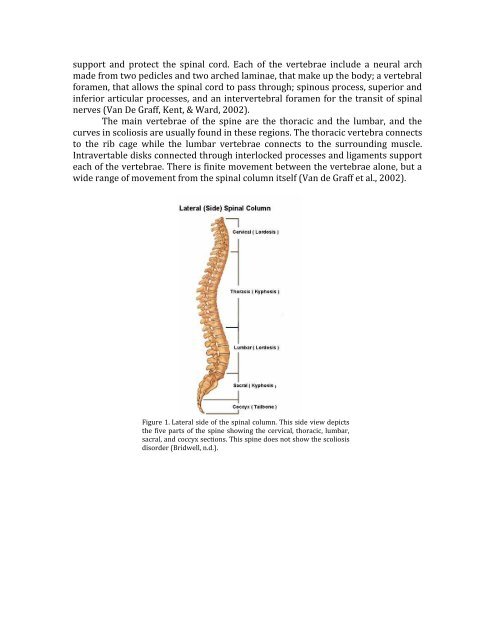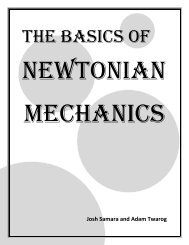Brace Yourself: Redesigning the Charleston Back Brace
Brace Yourself: Redesigning the Charleston Back Brace
Brace Yourself: Redesigning the Charleston Back Brace
You also want an ePaper? Increase the reach of your titles
YUMPU automatically turns print PDFs into web optimized ePapers that Google loves.
support and protect <strong>the</strong> spinal cord. Each of <strong>the</strong> vertebrae include a neural arch<br />
made from two pedicles and two arched laminae, that make up <strong>the</strong> body; a vertebral<br />
foramen, that allows <strong>the</strong> spinal cord to pass through; spinous process, superior and<br />
inferior articular processes, and an intervertebral foramen for <strong>the</strong> transit of spinal<br />
nerves (Van De Graff, Kent, & Ward, 2002).<br />
The main vertebrae of <strong>the</strong> spine are <strong>the</strong> thoracic and <strong>the</strong> lumbar, and <strong>the</strong><br />
curves in scoliosis are usually found in <strong>the</strong>se regions. The thoracic vertebra connects<br />
to <strong>the</strong> rib cage while <strong>the</strong> lumbar vertebrae connects to <strong>the</strong> surrounding muscle.<br />
Intravertable disks connected through interlocked processes and ligaments support<br />
each of <strong>the</strong> vertebrae. There is finite movement between <strong>the</strong> vertebrae alone, but a<br />
wide range of movement from <strong>the</strong> spinal column itself (Van de Graff et al., 2002).<br />
Figure 1. Lateral side of <strong>the</strong> spinal column. This side view depicts<br />
<strong>the</strong> five parts of <strong>the</strong> spine showing <strong>the</strong> cervical, thoracic, lumbar,<br />
sacral, and coccyx sections. This spine does not show <strong>the</strong> scoliosis<br />
disorder (Bridwell, n.d.).
















